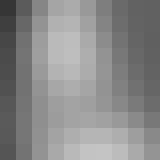This condensed survey course focuses on four key periods or themes from the history of design in the West. Together we’ll trace the emergence of design as a recognized practice, why things look the way they do, and how designers approached specific design problems in their work. Students will develop an understanding of where the wide variety of today’s design practice comes from. By participating in this survey of the works of innovative groups and individuals, we outline the process by which graphic design moved from a purely instrumental practice, to becoming a demanding creative and hybridized field. Each week, a short quiz will test your knowledge of concepts, and a short reflective assignment will give you the opportunity to analyze the questions designers ask themselves today. This is an essential course for emerging designers entering the field, or for students interested in learning more about visual culture and analysis. No previous experience is required. A note about this course: This course is taught from the perspective of contemporary design, to connect ideas that helped formulate design practice from the 1850s through the 1960s to the ways that designers think today. The relationship of words and pictures in graphic design is looked at through the ever-changing social and cultural contexts, technologies, aesthetics, and politics of their eras. The definition and practice of graphic design includes all public visual communications, which is a global practice. It was the evolution of mass production and communication in the West that specifically redefined graphic design as a professional practice and is this course’s particular narrative. We hope students will consider how to connect the themes and ideas offered in this course to your own culture.
The Foundation Year

Loading...
Skills You'll Learn
Art History, History, Graphic Arts, Graphic Design
Reviews
4.7 (2,445 ratings)
- 5 stars78.20%
- 4 stars15.91%
- 3 stars4.13%
- 2 stars0.94%
- 1 star0.81%
AD
Dec 4, 2016
Loved it and all the examples the teachers put into it, as well as the organization and evolution of themes. Big thank you to the teacher ladies. I learned a lot and enjoyed the lessons very much.
TR
Jul 22, 2020
I enjoyed this course--it gives a useful and broad overview of Graphic Design, discussing artists in historical contexts as well as unpacking some of the philosophies that informed their work.
From the lesson
The Bauhaus
This week, we'll look at how the work and teachings of The Bauhaus (1919-1933), and how design emerged as a recognized practice.
Taught By

Louise Sandhaus
Faculty, Program in Graphic Design

Lorraine Wild
Faculty, Program in Graphic Design
